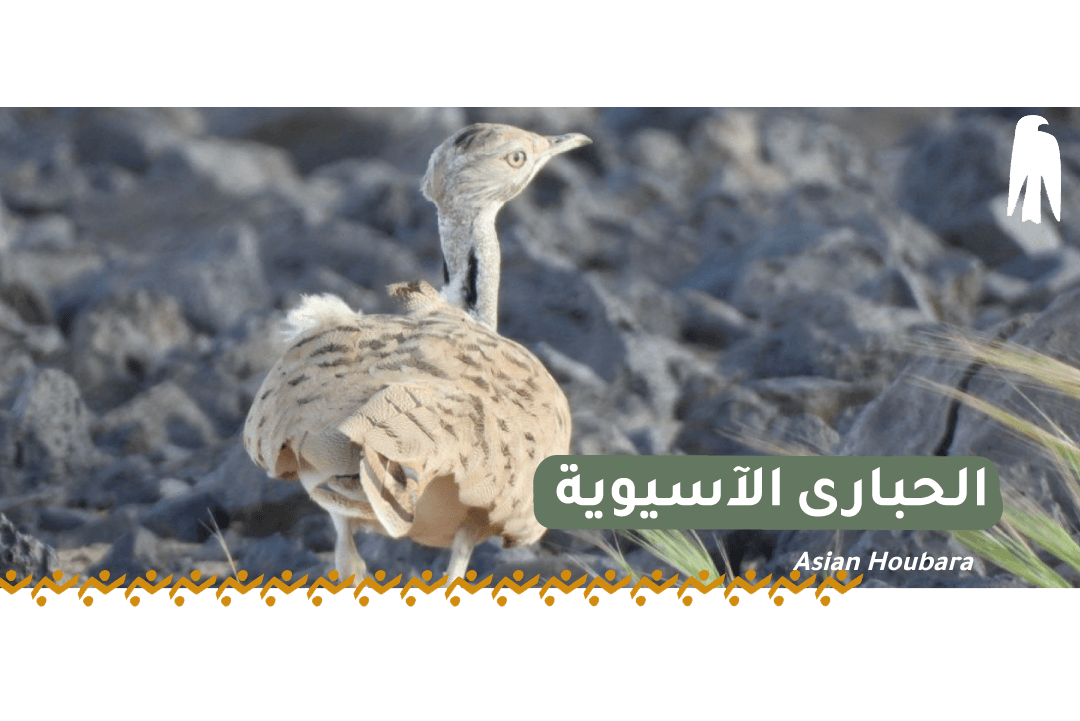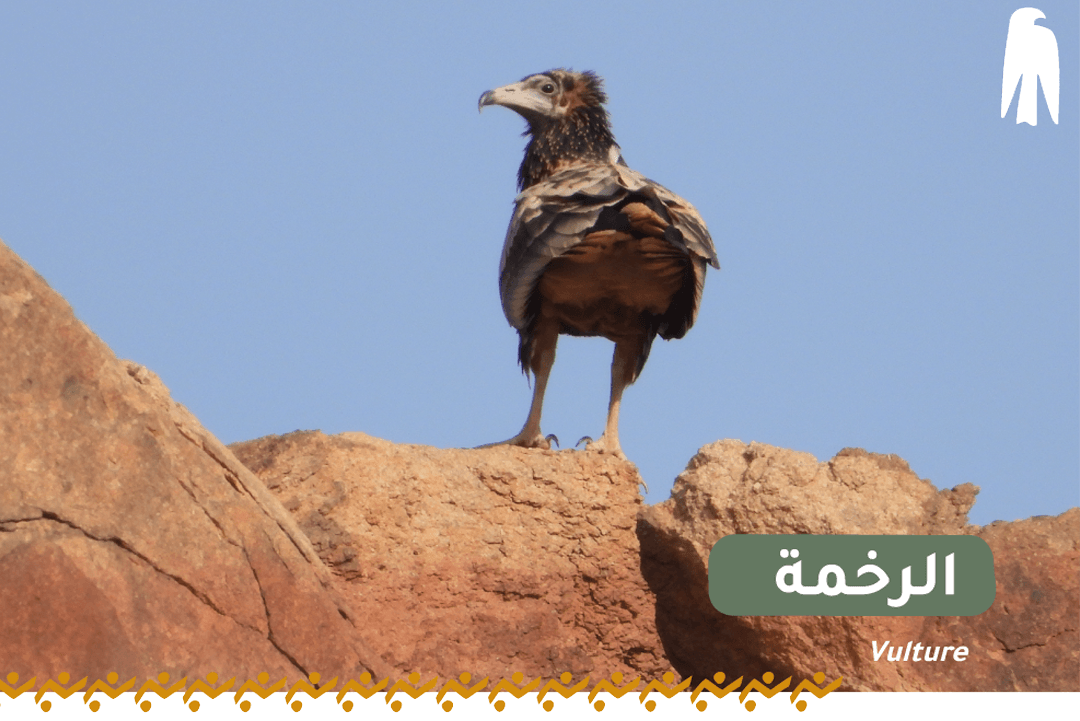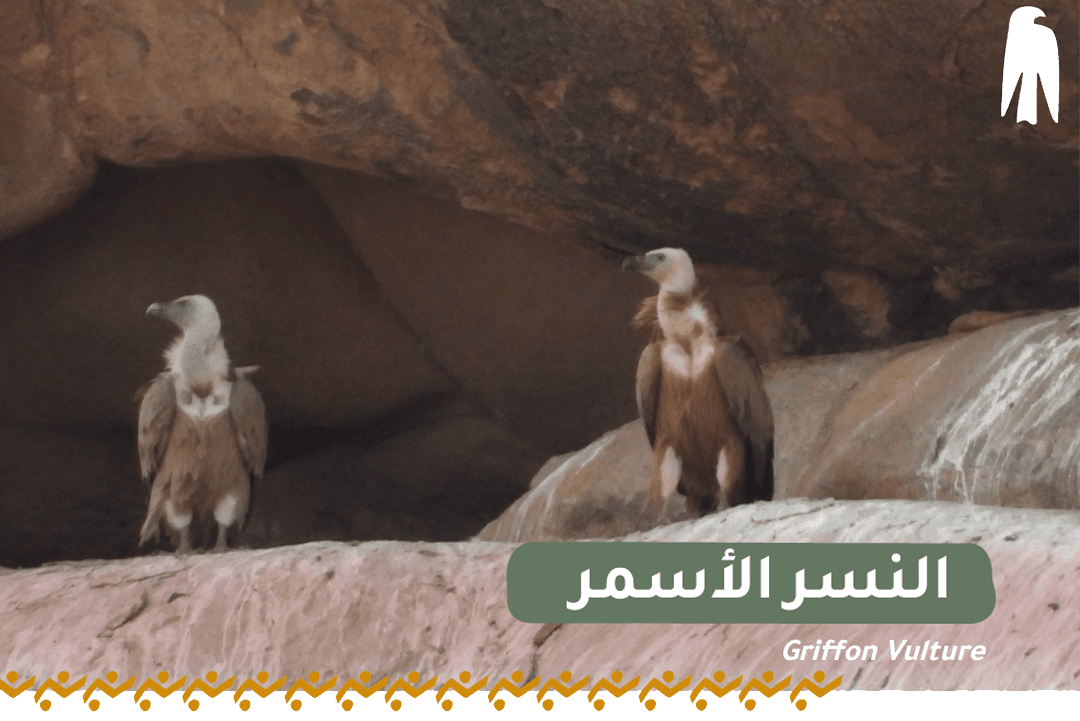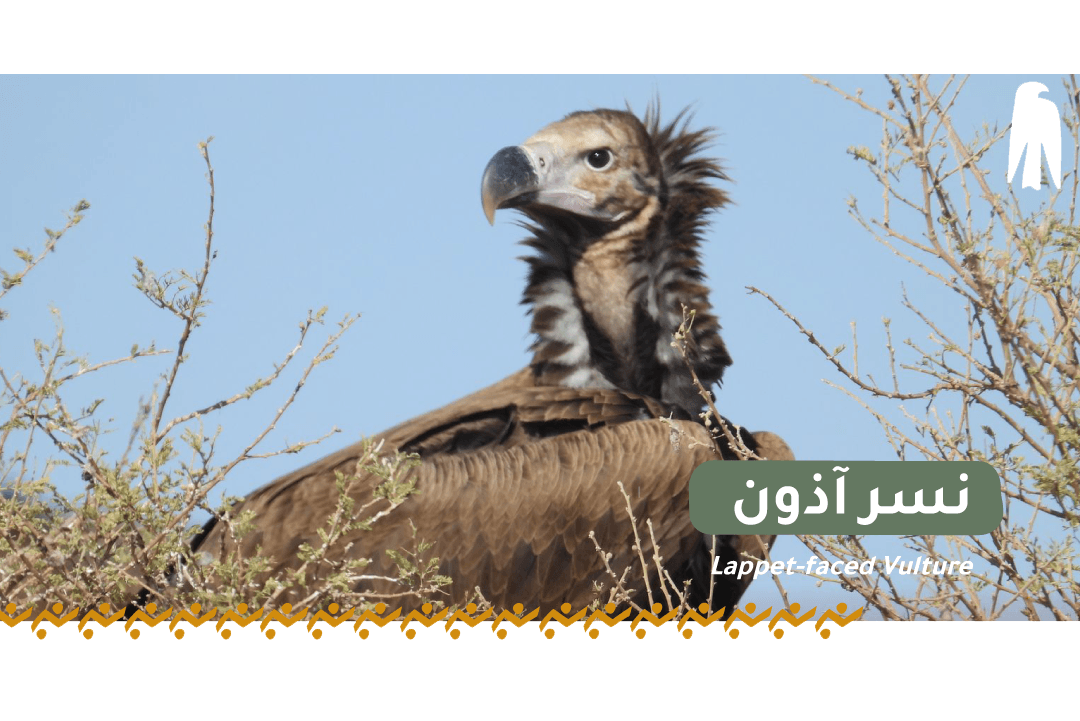A migratory bird that passes through King Salman bin Abdulaziz Royal Reserve and a winter visitor which is critically endangered globally.
Tabarjal, Al-Khunfah, Hail
Migratory passer and winter visitor
Insects and worms
Critically endangered

The Reserve is an important stopover for this species
Critically endangered, both globally and locally, due to overhunting.
- Size: 55–75 cm in length, males weigh 1800–3200 g, females 1700–1200 g, wingspan 150 cm.
- Daily range: Estimated at 60 km, for foraging
- Nesting: In a shallow, unlined depression in the ground
Harrat Al-Harrah
Resident breeder and winter visitor
Seeds, plants and insects
Critically endangered

Significant efforts are made to conserve this species, including a special initiative for reintroduction and population enhancement within various areas of the Reserve, especially Harrat Al-Harrah, as well as inclusion in monitoring programs.
A migratory bird passing through King Salman bin Abdulaziz Royal Reserve and a winter visitor.
Al-Qurayyat, Turaif, Tabarjal, Tayma and Hail
Resident breeder, migratory passer and winter visitor
Carrion
Endangered

Contributes to environmental cleanliness by feeding on carrion.
A nesting bird in King Salman bin Abdulaziz Royal Reserve, locally endangered. The Reserve is one of the largest and most important sites for this species’ aggregation and nesting in the region.
Hail
Resident breeder
Carrion
Not endangered

Recently, its numbers have increased in the Reserve, with efforts to provide a supportive environment ensuring its survival and reproduction.
A migratory and winter visitor to King Salman bin Abdulaziz Royal Reserve. The Reserve is an important site for this species, with over 2,500 individuals spending the winter there.
Al-Qurayyat, Turaif, Harrat Al-Harrah, Tabarjal
Migratory passer and winter visitor
Rodents, birds, reptiles, and carrion
Endangered

Follows livestock herders to feed on carrion, contributing to environmental cleanliness.
One of the largest resident vultures recorded in King Salman bin Abdulaziz Royal Reserve, its nesting in Al-Tubayq marks the northernmost extent of its breeding range. It nests on acacia trees and high rocks, with nests being shallow bases about 2 meters in diameter, made of sticks, fur, hair, and skin. It lays one egg per year, with a total nesting period of about 355 days. It is 115 cm long, with a wingspan of 255-290 cm, and weighs 5400-9400 g.
Al-Tubayq, and Al-Khunfah
Resident breeder
Carrion
Endangered

Maintains ecosystem health by feeding on carcasses, helping to prevent the spread of disease.
